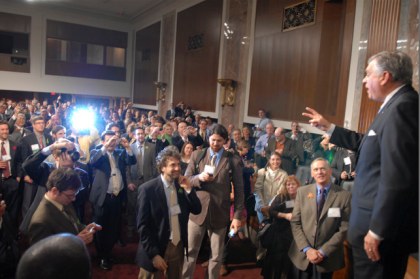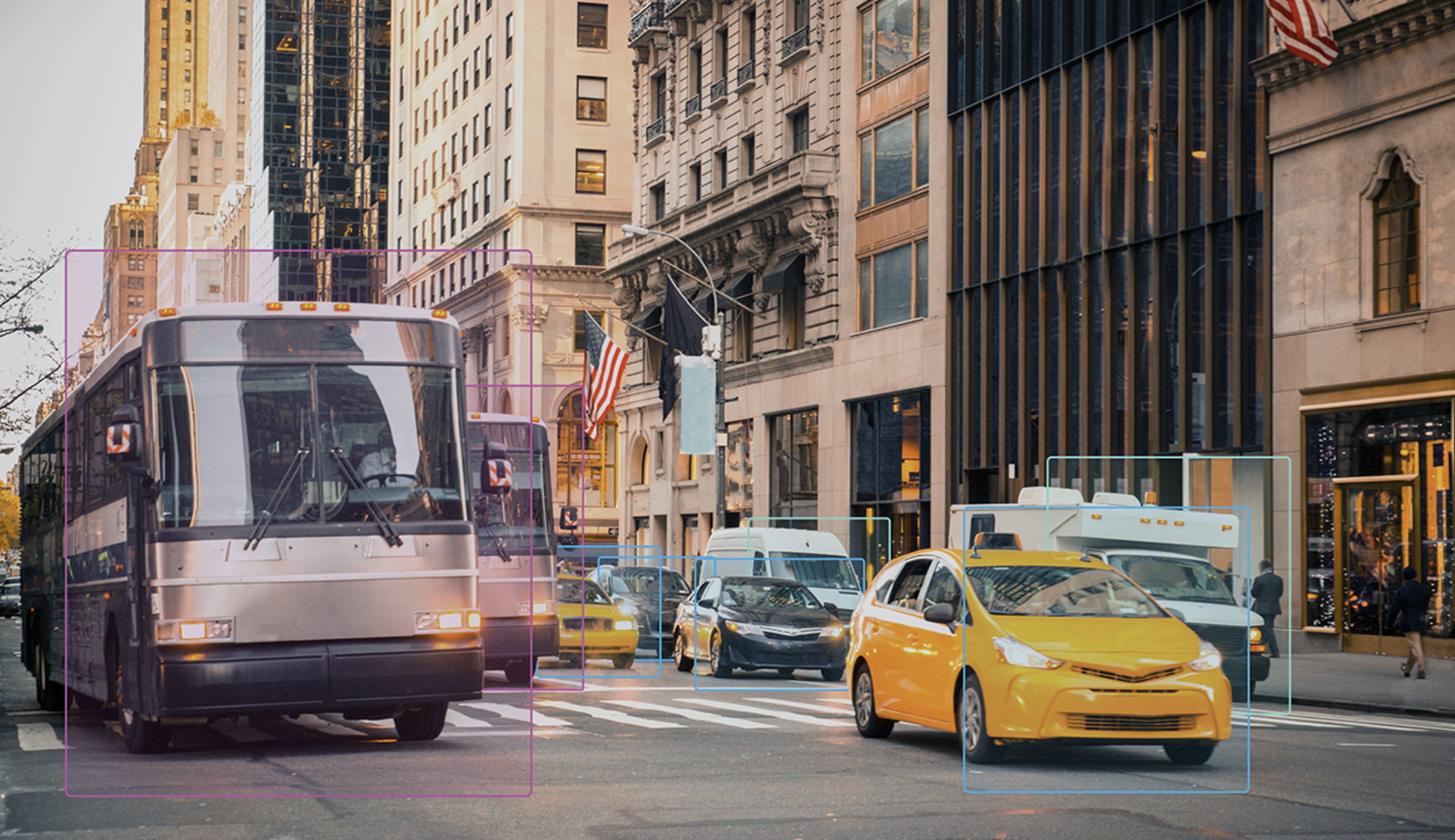We couldn’t put a bow on 2010 until we’d thanked those who contributed to the cause of sustainable transportation and smart growth last year and shaken our fist at those who’d done their darnedest for sprawl and highways. Check out our first two installments of national, state and local Streetsie winners. Here are our parting thoughts and your final votes. Then we can really move into 2011.

Happiest Occasion: 2010 did have its winning moments. It’s hard to debate that LaHood’s "Tabletop Speech" at the Bike Summit in March was one of the best - along with his subsequent declaration that “this is the end of favoring motorized transportation at the expense of non-motorized.” It still gives me chills.
LaHood literally jumped on a table in front of hundreds of cyclists and said that people around the country “want out of their cars; they want out of congestion; they want to live in livable neighborhoods.” And then he thanked the cyclists for hanging in there with the DOT as it transitions to being an engine of sustainability. “I'm very, very grateful!" Nearly 40 percent of Streetsblog readers agreed that this was the highlight of the year.
Good stuff, indeed. And we have LaHood to thank for some of the other bright spots last year, like two rounds of TIGER grants, providing over $2 billion to states for innovative transportation projects.
Some a-ha moments at the federal level won us over. For one, the feds are taking big strides on bringing health and environmental impacts, as well as performance metrics, into consideration when they make grants (instead of just looking at costs). And they’re realizing that transportation reform is health reform – Michelle Obama’s obesity task force even made the connection between active transportation options and healthy kids. Federal funding of bike/ped projects dipped from 2009’s all time high, but it’s still at impressive levels.
And the feds are catching on to what budget-conscious people everywhere have known for a long time – you can’t calculate the cost of a home without figuring out how much it’ll cost you to get there from everywhere else. Low cost-per-square-foot out in the suburbs doesn’t help you pinch pennies if your family’s mandatory two cars are bleeding you of $20,000 a year. Including transportation costs in home affordability ratings was a big step forward.
Best cause for optimism: The goal of the movement for sustainable transportation, in the end, is fewer cars on the road. So it stands to reason that you, Streetsblog readers, were reassured that there is, indeed, hope for the future by the fact that kids today find freedom in instant wireless communication not gas-guzzling cars. Forty-four percent of you voted to give the Streetsie to the youth of today who would rather fiddle with their smart phones on the subway than watch the road from behind the wheel of their father’s Oldsmobile.

Least favorite panacea: There are a few magic pills out there that are supposed to cure all our ills, and we’re wary of them all. First and foremost, though, we’re just not buying all the hype around the electric car. The Obama administration has pledged billions for R&D, the auto industry is marketing them as polar-bear-friendly, and eco-minded folks everywhere are getting ready to trade in their hybrids for a plug-in.
But the negative consequences of driving aren’t exclusively measured in carbon molecules. When we advocate for transportation options, we’re also trying to keep our cities from being choked with traffic congestion. We’re finding a more efficient way to move people around than keeping each in her own two-ton bubble. We’re getting more exercise. We’re reducing automobile-related crashes. We’re finding better uses for our public spaces than making them parking lots. We’re designing human-scale cities.
The electric car might reduce carbon emissions by 30 percent over a standard car, but it doesn’t solve any of these other problems. Besides, we think we can do better than 30 percent. We’ll stick with our zero-emissions bicycles and our own two feet.
New Year’s Resolution for 2011: Let’s do this one in two parts: the personal and the political. (I know, I know, the personal is political.)
First, the political. There’s a lot we can resolve to do this year. Robert Puentes at Brookings has laid out a pretty good to-do list including everything from starting the shift to a VMT fee to reducing construction delays, from expanding public-private partnerships to cutting wasteful spending. We’re in favor of all of those.
But our 2011 resolution is to keep bike-ped spending in whatever version of a transportation reauthorization comes down the pike. As fiscally conservative Republicans look to cut spending, bike-ped programs are extremely vulnerable. We need to ramp up our efforts to reach across the aisle to make it clear that active transportation isn’t just for hippie liberals. There are serious conservative arguments to be made for keeping federal support for these programs. Let’s resolve to make them.
Now, the personal. I, myself, have two transportation-related resolutions. First, in service to the previous resolution, I’m going to revoke my AAA membership until they reverse their position on federal funding for bike-ped programs. (I don’t have a car, so it’s out of an overabundance of caution that I have a membership anyway.)
Second, I’m going to use my Zipcar membership more. It may sounds strange that I want to drive more in the new year. But it’s important to me that being car-free shouldn’t feel like a sacrifice. I want to make sure I can do everything I want without limitation.
Sometimes it’s psychologically hard to justify the cost per Zip-trip, even though I’m savings thousands a year by not having a car. I resolve to integrate car-sharing more fully into my repertoire of transportation options, to make sure I never feel like I'm missing out on anything by not having a car.
What’s your New Year’s resolution?





